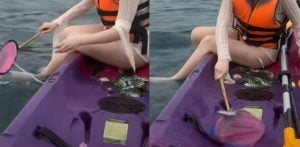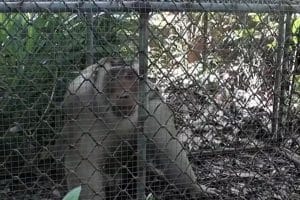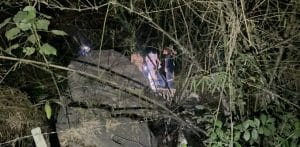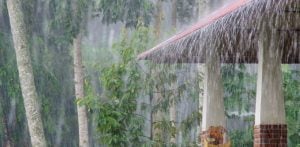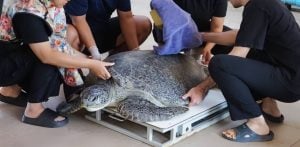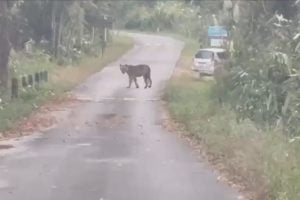“Red tide’ blooms cause murky conditions

PHUKET: Many of the island’s beaches are experiencing algal blooms that are causing murky conditions commonly called “red tides”, but marine biologists say the situation is not dangerous and sea conditions are expected to return to normal soon.
Suree Satapoomin, a researcher at the Phuket Marine Biological Center, told the Gazette that the blooms were first detected on west coast beaches, with the most common microbe detected being Ceratium furca, one of the 2,000 known species of Dinoflagellata.
Usually considered plants, Dinoflagellata are unique in that they also have some animal characteristics, such as preying on smaller organisms for food.
Water samples containing Ceratium furca were taken off Koh Hei in mid-February. The microbe was subsequently found in samples taken at Kata, Kalim, Patong, Nai Yang and Kata Noi beaches, where poor water quality led researchers to suspect its presence.
K. Suree said that although algal blooms are common in Phuket this time of year, they usually dissipate in about a week. The blooms this year have already lasted longer than normal.
Samples taken have not revealed any dangerous accumulations of toxins sometimes associated with red tide, but K. Suree warned people with sensitive skin or allergies to take precautions as exposure can cause itchiness or a rash.
The blooms are the result of strong sunshine and relatively calm sea conditions, coupled with high levels of phosphorus and nitrogen in the water, both the result of “human activities”, she said.
Divers descending greater than 10 meters are advised to wear insulating wet suits, as water temperatures at depth are unusually low at the moment, she said.
As cold water tends to harbor more nutrients, this factor might be fueling the algal bloom in shallow areas, she suggested.
The algal blooms are expected to dissipate soon, with conditions at Nai Yang and Koh Hei already back to normal, she said.
Blooms of Ceratium furca along Thailand’s gulf coast are common because beaches there are flushed only by one tide daily, compared with two tides on Phuket beaches, she said.
Results released by the PMBC also revealed the return of the bright Enteromorpha in Patong Bay in January and February, along with concentrations of the diatom Chaetoceros of about 5 million cells per liter of water.
Enteromorpha is the bright green seaweed that has been found in Patong in years past. It’s growth in the bay was partly attributed to Patong Bay containing high levels of nitrogen and phosphorous, two main constituents of human waste.
Latest Thailand News
Follow The Thaiger on Google News:








